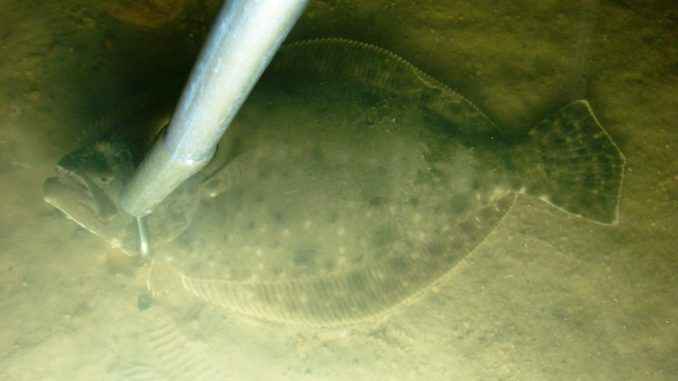January 25, 2021
Flounder Gigging


Flounder gigging, is a type of fishing specifically dedicated to catch numerous saltwater flatfish sticking close to the sea bed in shallow waters. It’s a unique experience because it allows you to see all the marine life in the shallows at night. Flounder gigging is popular in the spring and summer months and primarily done at night by shining bright lights on the ground in the shallow flats and backwaters.
Just like spear fishing and bow fishing, with regards to its approach, flounder gigging doesn’t involve catching fish the usual way by rod and reel. Instead, it has to do with finding flatfish (either on foot or on a boat) on the bay floor and striking them with a gig, a sort of fish spear.
What to Expect When Flounder Fishing
Going out flounder gigging with little or no knowledge would be difficult. So, to avoid all of that, let’s have a look at the basics. If you aren’t going by foot, you need a boat. It’s possible do go flounder gigging on a kayak, but a flat bottom boat is usually best. In the past, the gigging pole was made from wood with three prongs attached to the end (to strike the fish with). However, today you can conveniently find metallic/ stainless steel gigs too.
When there’s absence of high tides, and you plan to go flounder gigging at night, remember to take along some lights. And if your budget allows, try installing underwater lights at the base of your boat or mount them somewhere on top (where it can perfectly reflect on ie fish’s eyes). That’s because you can easily locate them through their shiny red eyes. It’s best to go flounder gigging when the water is calm and not too windy. Lastly, remember to purchase a fishing license if your state requires it.
Fun fact: Flatfish is a generic term covering almost 700 different species, some of which include; Dab, Flounder, Halibut, Plaice, Sole and the like.
Flounder Gigging Tips:
- The flounder comes to the bay area following its prey which moves to waters with cooler temperature at night. So, if you are flounder gigging on a temperate night, try a litter deeper than usual.
- A rapidly falling tide can displace the sand at the bay, making it difficult for you to see through. If that happens, wait a while for things to settle back to normal.
- Wind is yet another stimulus affecting water clarity. When it's windy, you should try looking for gigging spots protected by trees or structure where wind has the minimal influence.
- To guess how big a flounder is on the bottom, pay attention to how far apart its eyes are. The farther apart they are from one another, the larger your catch will be.
- Take warm white lights when planning to flounder gig in muddy waters, and cooler white hues if the water’s clear.


